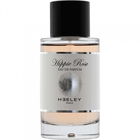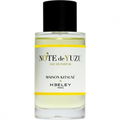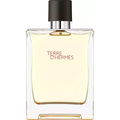Cologne Officinale, a remedy dressed in Cologne attire?
Certainly, herbs have been used here in the finest apothecary tradition, at least in terms of scent. But the real kick of this little water comes from a smoky note.
Unfortunately, you can't insert images in the respective reviews on the forum, so I uploaded two interesting pictures of a plant in my album, which will play a role in the following fragrance description.
But first, the obligatory
Sizzle!
The opening is unusually powerful; James Heeley spares us the usual prelude of introductory hesperidic notes.
These are certainly pleasant, but they are immediately accompanied by the bitter and wonderfully aromatic herbs.
A peculiar smoky note also resonates here, but it disappears in due time, only to reappear later.
The lavender is typical for the fougère genre, strong, slightly sharp, and structure-giving.
According to the fragrance pyramid, a quirky note is also used, namely "French soap."
But what should one understand by such a region-specific, surfactant-containing substance?
I own several soaps from our neighboring country, but I cannot identify a national characteristic per se, as each piece is differently scented. Lemon, lavender, jasmine, even musk, to name a few of the possible variations, do not create a uniform line.
But I think this refers to a basic substance, the olive oil in the highly regarded soap from Marseille.
A little historical digression:
Today's Syrian Aleppo is the home of this congenial invention, olive oil soap. Here it is still made according to ancient tradition, poured into molds, dried, and aged until it takes on this beige color.
Its scent is still strongly influenced by the olive oil; sometimes bay laurel is also used, which adds to the aroma, but unfortunately is banned in Europe due to possible skin irritations.
As a result of the lively trade and exchange in the Mediterranean, with the warring Crusades playing a role here as well, more soap factories gradually emerged along the western coast, especially in Alicante and Genoa.
Although soap was also produced in Marseille, the triumph of this genre was sealed by royal edict thanks to Louis XIV. This early manufacturing regulation meticulously dictated what could be sold as Marseille soap. Only olive oil was allowed, no animal fats or oils.
By the way, the so-called soaps from Castile in Spain have also adhered to these strict regulations for centuries, to mention other examples.
Now back to the soap used by Heeley in the fragrance.
I cannot identify a clear olive oil soap, but rather a variant with a floral character; I suspect the classic rose geranium as an addition. The oakmoss fits in classically and creates the typical caring impression.
Mind you, the note is called "French" and not "Marseille" soap.
I get the impression of a perfumed soap, very subtle though. In other words, you have to make an effort to discern the note.
It would have been more honest to simply state the flower.
But that would be missing the point and petty on my part, as the composition smells extremely successful, name notwithstanding.
What pleases me even more is the use of galbanum. This green resin creates a certain seriousness, giving depth and structure.
Now to the "dry woods."
Dry is the scent impression without a doubt, also woody. But what makes this accord so unique, I would like to explain using the aforementioned photos.
I photographed a Geranium robertianum.
And now comes the folk name of this creeping plant: "stinking cranesbill."
Exactly, stinking!
But it only stinks for some noses, not for me!
Why do I mention this here?
Well, while gardening, I pulled up a lot of this weed.
While rubbing and picking the creeping monster, the plant sap oozed out, and I could distinctly identify the resinous smokiness.
What do I mean by identify?
At least a two-meter radius with an extremely brutal longevity and sillage invaded my nose!
I will try to describe the scent.
It smells like, emphasis on like and not exactly, smoky vetiver. Cypriol or nagarmotha could also be considered.
The direction should be clear.
And it is this smoky note that I discern in Cologne Officinale.
I find it extremely interesting that this smoke accompanies the fragrance progression, sometimes more intensely, sometimes quite weakly, as if the composition has a life of its own.
The base is quite balanced; the amber is not as sweet as usual and rounds off subtly.
I was pleasantly surprised by the longevity and sillage. The little water lasts definitely longer than one would expect from its name category.
At least an EdT round is offered here.
You are surrounded by a magical cloud for several hours.
Unusual in its composition, this Cologne ranks among the better and more thoughtful representatives of its kind.
To mention would be
Cologne Intense Eau de Parfum or "Azemour Les Orangers | Parfum d'Empire."
It is these creations that fortunately create a refreshing and excellent reinterpretation of the theme. They are all characterful, distinctive, and quite differentiated.
They make a statement and challenge without overwhelming.
And they uphold the legacy of an Edmond Roudnitska.
The fragrance is not cheap, but the price is probably appropriate for this type of quality.
One thing is for sure about the scent; it is distinctive and quite unique, so you won't forget its main accord quickly.
Therefore, I advise against wearing it in strong sunlight and high temperatures.
As it is well known, there is evil under the sun…






 Top Notes
Top Notes  Basil
Basil Heart Notes
Heart Notes  Rosemary
Rosemary Lavender
Lavender Sage
Sage Base Notes
Base Notes  Oakmoss
Oakmoss Dry woods
Dry woods Amber
Amber
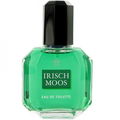


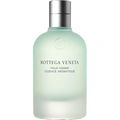





 Clelly
Clelly Ravona
Ravona JewishJesus
JewishJesus 3aloosh
3aloosh Floyd
Floyd Yatagan
Yatagan Danny264
Danny264 Luwa
Luwa Eggi37
Eggi37 Axiomatic
Axiomatic









